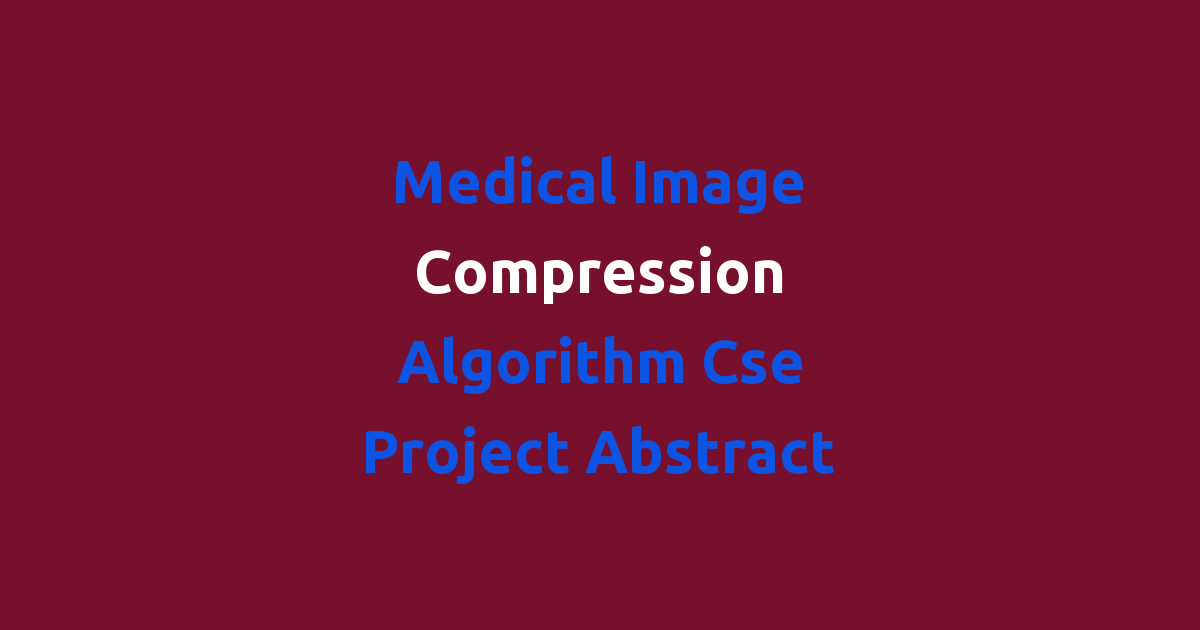Abstract: This project focuses on developing a compression algorithm specifically designed for medical images within the field of computer science engineering.
Medical Image Compression Algorithm CSE Project Abstract
Introduction
In the field of medical imaging, the storage and transmission of large image files are often a challenge due to their high resolution and complexity. Medical professionals rely heavily on these images for accurate diagnoses and treatment planning. Therefore, developing efficient compression algorithms for medical images is crucial to reduce storage space and transmission time while preserving image quality.
Problem Statement
The current compression algorithms used for medical images are not optimized for the specific requirements of the medical imaging domain. These algorithms may lead to lossy compression, which can result in a loss of important diagnostic information. Additionally, the compression ratios achieved by these algorithms may not be satisfactory, leading to large file sizes that are difficult to manage.
Existing System
The existing compression algorithms for medical images are based on general-purpose approaches such as JPEG and PNG. While these algorithms work well for general images, they may not be optimal for medical images due to their specific requirements. Medical images often contain fine details and subtle nuances that need to be preserved during compression.
Disadvantages
Some of the disadvantages of the existing compression algorithms for medical images include:
– Loss of diagnostic information due to lossy compression
– Inadequate compression ratios leading to large file sizes
– Lack of optimization for the specific requirements of medical imaging
– Inefficient transmission and storage of image files
Proposed System
Our project aims to develop a novel compression algorithm specifically designed for medical images. This algorithm will be based on advanced image processing techniques that take into account the unique characteristics of medical images. By optimizing the compression process for medical imaging requirements, we aim to achieve higher compression ratios with minimal loss of diagnostic information.
Advantages
Some of the advantages of our proposed compression algorithm include:
– Preservation of fine details and subtle nuances in medical images
– Higher compression ratios leading to reduced file sizes
– Optimization for the specific requirements of medical imaging
– Efficient transmission and storage of image files
Features
Some of the key features of our proposed compression algorithm include:
– Lossless compression to preserve diagnostic information
– Adaptive compression techniques based on image content
– Region of interest coding to prioritize important image areas
– Error resilience for robust transmission and storage
Conclusion
In conclusion, our project aims to address the limitations of existing compression algorithms for medical images by developing a novel algorithm tailored to the specific requirements of medical imaging. By focusing on preserving diagnostic information, optimizing compression ratios, and enhancing transmission efficiency, we aim to contribute to the advancement of medical imaging technology. We believe that our proposed compression algorithm has the potential to significantly impact the field of medical imaging and benefit healthcare professionals and patients alike.

